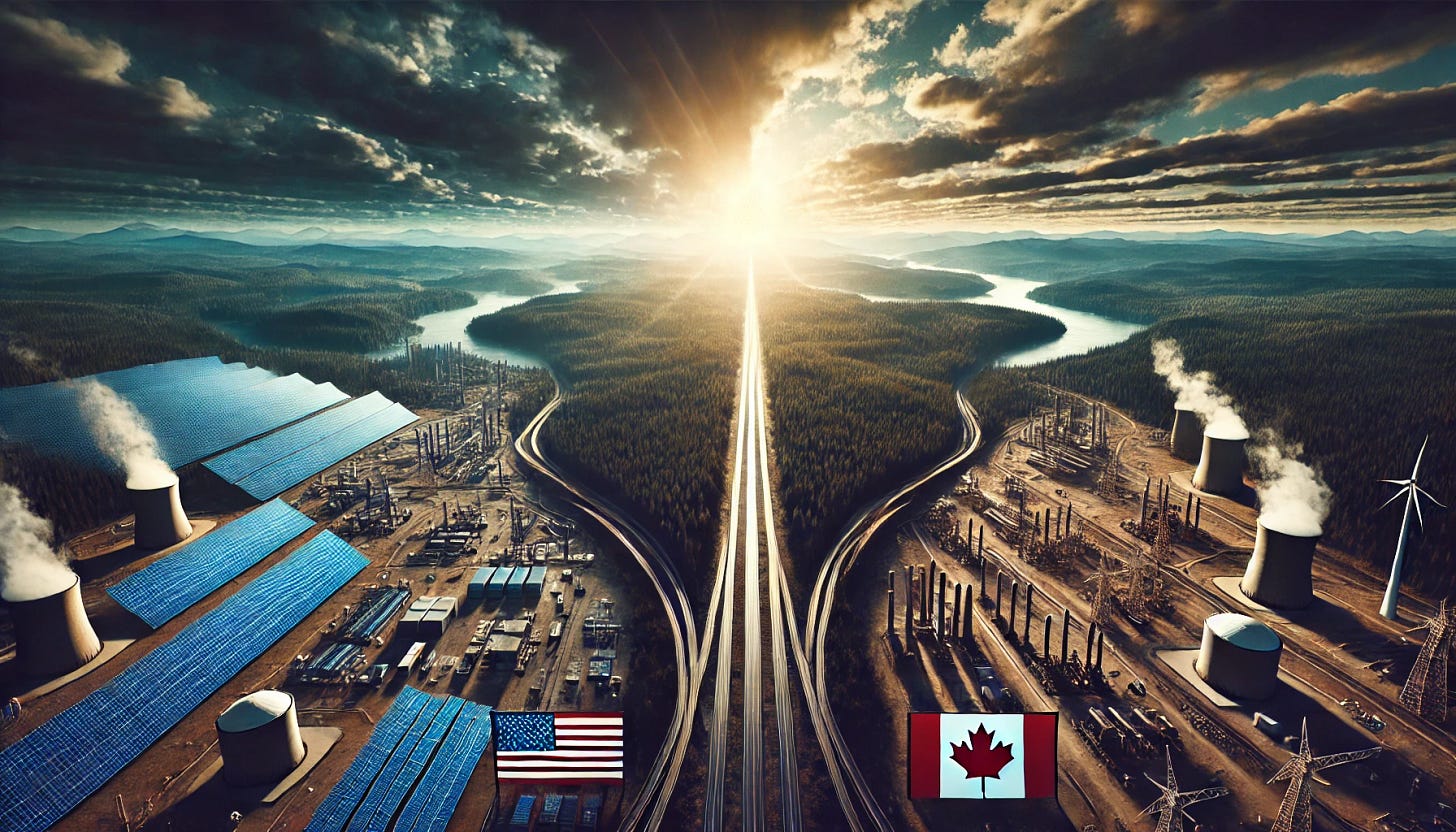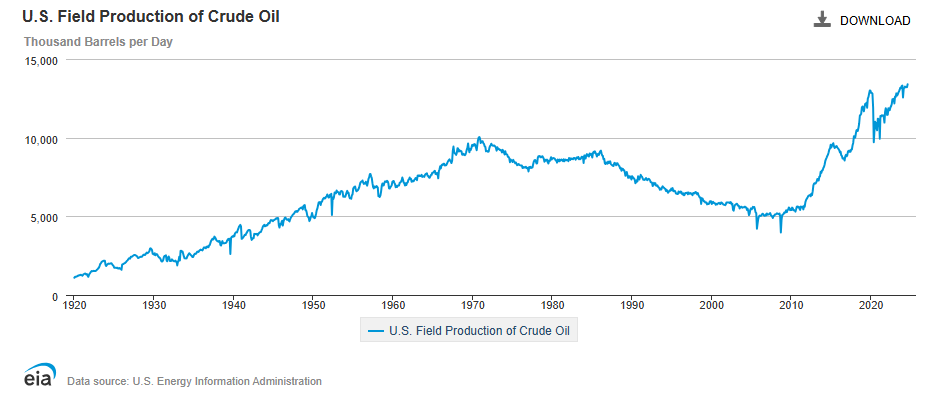Changing Trajectories
How is Policy Impacting Energy Supply on Either Side of the 49th Parallel?
𝙒𝙝𝙖𝙩 𝙘𝙖𝙪𝙜𝙝𝙩 𝙢𝙮 𝙖𝙩𝙩𝙚𝙣𝙩𝙞𝙤𝙣?
The different trajectories of US and Canadian energy policy.
Two stories highlight the contrast: This week we received details on Canada's proposed cap on emissions from it's oil and gas sector. Critics see this as a cap on oil and gas production.
Meanwhile US policy has been less restrictive - Bloomberg Green highlighted US oil production growth in spite of John Kerry's claim from last year that "We are moving away from fossil fuels”. And it may get better for US energy with Trump heading to the Whitehouse.
𝙒𝙝𝙮 𝙞𝙩 𝙢𝙖𝙩𝙩𝙚𝙧𝙨?
Both Canada and the are energy superpowers and benefit economically from the success of their energy industry. Both countries have seen their hydrocarbon production reach new highs.
How quickly could these trajectories change?
𝘿𝙚𝙩𝙖𝙞𝙡𝙨:
• Canada has proposed draft regulations to cap greenhouse gas emissions* in its oil and gas sector, targeting a 35% reduction below 2019 levels. The regulations introduce a cap-and-trade system to incentivize cleaner production, supporting jobs and innovation without restricting production growth. The measures are part of Canada’s broader climate strategy to lower emissions by 40-45% by 2030. Consultation on the draft runs from November 9, 2024, to January 8, 2025.
• US policy, in contrast, has not placed a strict total emissions cap, favoring policies that restrict the relative level of emissions (proposing a carbon capture requirement from some fossil fueled power plants), targeting the rate of a release from a single source (through the methane tax, for example), or through the IRA that promotes low carbon technologies in an effort to crowd out fossil fuels.




